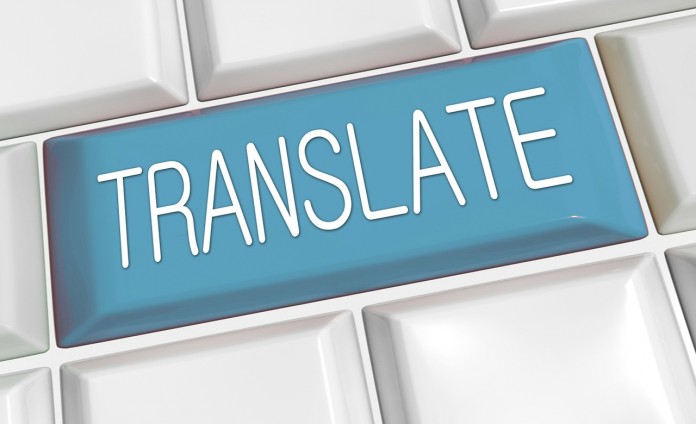Automation Doesn’t Solve Everything
Taco Bell’s return to Japan in 2015 was widely anticipated, but the company’s launch of its Japanese-language website spawned a media frenzy—not because of the food. With machine-translated menu items that turned “Cheesy Fries” into “Low Quality Fleece” and “Crunchwrap Supreme – Beef” into “Supreme Court Beef,” the company had to rush to take down the site to mitigate the damage to its image.
Translating your materials professionally is a smart business move. Translation may be required for your market, it makes people more likely to buy your product or service, and support costs go down as people can access information in their own language. But where to begin?
Sure, professional translators will get you exactly what you want, but you’ve probably heard some buzz about machine translation (MT) and are wondering if it might save you money and time. Before you take the plunge, here are some things you should know about MT.
There’s no such thing as a free lunch
Free online translators are very popular—Google alone serves up more than a billion translations a day. It’s important, though, to understand what you get when you use any free machine translation service:
- They can only give you an idea of what the foreign text says. Since they have to translate everything from love letters to shopping catalogs, they are designed to generalize rather than specialize. They don’t “know” what your text is about, so they “guess.” Often they guess right. Sometimes they don’t.
- MT systems leverage big data, and are programmed to give preference to the most popular words and phrases. Predictably, problems emerge: in some language combinations “US President” was translated as “Bush” well into the Obama administration.
- They store and use your data to learn. That’s fine for a public webpage for your family trip, but not for your company’s confidential material.
Free translators are fine for the casual user, but their reliance on statistics, errors from incorrect data and lack of confidentiality make them unsuitable for serious business translation.
The machine can only do so much
Most serious MT users invest in training proprietary machine translation engines for specific kinds of text. If trained well, the resulting output should get words right, though it might not sound particularly elegant or even be grammatically correct. For some kinds of texts this might be acceptable, but for most it isn’t.
It won’t work for all texts and languages
Machine translation almost always involves translators or editors to refine the output. Even MT vendors agree it would be counter-productive to use MT for creative materials such as marketing copy or literature, and that it’s best used for drafting large sets of documentation or short-lived or otherwise untranslated materials.
It’s also important to note that machine translation does not handle all languages equally well. Languages with a similar structure may produce fairly good results, but if they differ greatly or there isn’t enough data, it might be more costly or impossible to develop a solution—making it more cost-effective to use a professional translator.
In short, there is no easy formula that can be applied to all text types and languages. Most companies that use machine translation agree that there is a lot of work involved in finding out whether it makes sense for their text types and language combinations.
Machine translation is an ongoing process
Long before the first word is ever translated, consultants, outside vendors, or in-house specialists need to determine an appropriate approach. You will need to budget for an ongoing process of:
- Establishing why you want to use machine translation in the first place (as opposed to professional translators)
- Determining which types of text and languages you want to translate using MT or professionals
- Evaluating what data and expertise you have available or need to acquire or to configure and customize your machine translation solution
- Assessing how your professional translators and editors can support the process
- Training your machine translation solution with new materials you produce
- Fine-tuning your process and re-evaluating your approach as technology continues to evolve
You may not save time or money
Your machine translation process will change as your technical team and your translators and editors get better at working with MT.
Costs will likely shift. Once you’ve settled on an approach, your higher initial investment in systems and training costs might level off to a lower but ongoing constant—like any other IT investment. Engineering costs could be relatively stable, but translation and editing costs might eventually drop as systems improve and translators and editors refine their strategies.
You may have noticed frequent use of the words “likely” and “might” above. That’s because there are many variables that can affect machine translation cost and time savings. Those same variables might also prevent the desired savings or make it actually more costly than professional translation.
Machine translation uses humans; human translators use MT
MT and translation professionals interact: An editor may correct machine translation output and—depending on the system—simultaneously “teach” the system so the same error does not occur the next time.
In a more integrated process, professionals use machine translation to support their work in combination with their high-end software. By interweaving several tools, translators often achieve a significant productivity and quality boost.
There is a time and a place for every technology
If qualified consultants determine that the cost and time of introducing machine translation would help you, you will still need professional translators and editors on your side to help you on this journey.
On the other hand, if the effort to introduce machine translation into your process is too costly or risky, you can benefit from professional translators who already use sophisticated translation technology to streamline their work and translate your materials with high and consistent quality.
At the end of the day, accurate information is key as you decide whether to invest in automating your translation processes. Consulting with experts will help you make a wise decision that gets your message across clearly and effectively without tarnishing your image.
Find a Home-Based Business to Start-Up >>> Hundreds of Business Listings.

















































